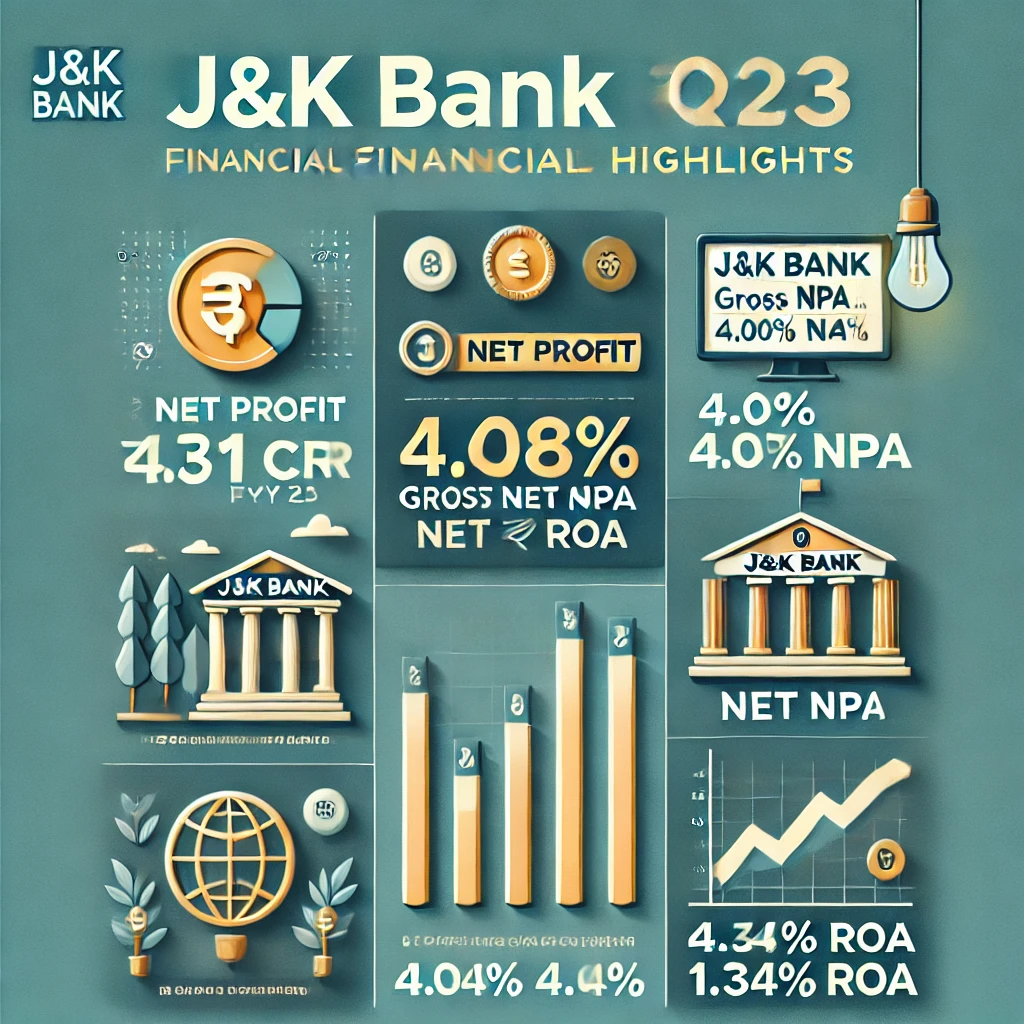J&K Bank, aka, Jammu & Kashmir Bank is one of India’s oldest regional banks, saw its stock tumble nearly 9% on April 23, 2025. But this wasn’t a typical market correction. The trigger? A tragic terror attack in Pahalgam, Kashmir, that shook not just the region’s confidence but also raised tough questions for investors who’ve backed J&K Bank’s strong financial turnaround in recent quarters.
Let’s walk through what happened, how it impacted the bank’s stock, and what lies ahead for investors trying to make sense of it all.
A Legacy Bank with a Regional Backbone
J&K Bank was established in 1938, making it one of India’s most enduring financial institutions. It operates primarily across Jammu and Kashmir and Ladakh, serving as the designated banker for the Government of J&K. Over the years, it has grown into a scheduled commercial bank with 1,000+ branches nationwide.
Despite facing challenges due to political unrest in the region, the bank has maintained strong relationships with local businesses, governments, and communities. It’s often seen not just as a financial institution—but as a core part of Kashmir’s economic lifeline.
The Pahalgam Attack That Triggered the Fall
On April 22, 2025, tragedy struck the valley again. Militants opened fire on a group of tourists in Pahalgam, a popular hill town. The attack claimed 26 lives and injured several others. (Business Standard)

While this wasn’t an isolated event in Kashmir’s volatile history, the fact that it directly targeted non-locals—potential tourists—has reignited fears around the region’s economic prospects.
And J&K Bank, being the most exposed corporate entity to the state’s economic pulse, felt the tremors almost immediately in the stock market.
- The stock fell over 8.6% to close at ₹103.41.
- Investors dumped positions amid uncertainty over tourism, regional confidence, and further instability.
Strong Financials—Overshadowed by External Risks
Ironically, the sell-off came at a time when J&K Bank had been reporting some of its best-ever numbers.
Q3 FY25 Performance Highlights:
| Metric | Q3 FY25 |
|---|---|
| Net Profit | ₹531 crore (↑ 26.2%) |
| Gross NPA | 4.08% (down from 4.84%) |
| Net NPA | 0.94% |
| Net Interest Margin (NIM) | 4.04% |
| Return on Assets (RoA) | 1.34% |
| Cost-to-Income Ratio | 57.28% (down from 62%) |
(Source: Business Standard)
These results underscore J&K Bank’s continued efforts to improve asset quality, boost profitability, and contain operating costs.

However, as the Pahalgam tragedy reminded everyone—in a region like Kashmir, non-financial risks can override financial metrics.
Peer Comparison: Undervalued or Appropriately Discounted?
| Bank | P/E Ratio | P/B Ratio | Net NPA (%) | ROE (%) |
|---|---|---|---|---|
| J&K Bank | 5.5 | 0.8 | 0.94 | 13.5 |
| HDFC Bank | 20.2 | 3.5 | 0.31 | 17.5 |
| ICICI Bank | 18.6 | 2.8 | 0.40 | 16.9 |
| Bank of Baroda | 7.9 | 1.2 | 0.68 | 13.0 |
Compared to larger and more diversified banks, J&K Bank trades at significantly lower valuation multiples, which could either be seen as a buying opportunity—or a discount for its regional and political risks.
(Source: Groww)
What Works in J&K Bank’s Favor?
- Dominant Market Share in Jammu & Kashmir.
- Improving Asset Quality through better credit recovery.
- Strong Government Backing as the designated banker.
- Operational Efficiency visible through falling cost ratios and rising margins.
What Concerns Are Valid?
- Geopolitical Exposure: Events like the Pahalgam attack can have prolonged economic impact in the region.
- Concentration Risk: Majority of business concentrated in a single state.
- Tourism-Linked Lending: Parts of the bank’s lending book are indirectly tied to sectors like tourism, hospitality, and small trade—all vulnerable to disruptions.
Who Might Consider Investing?
- High Risk–High Reward Investors: Those who understand regional dynamics and are comfortable with volatility.
- Value Seekers: Investors looking at low P/E, low P/B banking stocks with improving fundamentals.
- Dividend Income Investors: The bank’s improving profit profile may support stronger payouts in the coming years.
Who Should Stay Cautious?
- Risk-Averse Investors: Those who are uncomfortable with political or regional instability.
- Short-Term Traders: Sudden news events can cause sharp swings.
- Portfolio Diversifiers: Investors looking for national exposure or pan-India growth stories may prefer other banks.
Future Outlook: Stability is Key
The path ahead for J&K Bank is likely to hinge on two factors:
- Operational Execution: Continued improvement in NPAs, margins, and digital transformation.
- External Environment: Regional peace and law-and-order will be crucial in restoring investor and depositor confidence.

In the near term, the market may remain watchful, reacting sharply to any news—positive or negative—emerging from the Kashmir valley.
Disclaimer: This article is for informational purposes only. It does not constitute investment advice. Please consult a registered financial advisor before making any investment decision.
For more market updates, stock reviews, and regional insights, visit Magnifi Blogs.



Pingback: Stock Market Today: Market bullies smash nifty into profits - 28/4 Magnifi